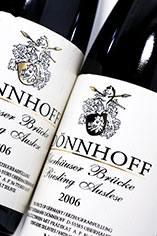Lucio Mastroberardino, one of the most prominent figures in the Italian wine world, died this week at the age of 45. His funeral is scheduled for today, January 31, in his hometown of Avellino, in the Campania region. Mastroberardino played a leading role in the rebirth of wine in Campania
One of the things a lot of people look for in wines – in particular young-drinking wines – is a good dose of clean, expressive fruit. Logically, a great number of winemakers seek to provide just that, in a precise and reliable manner. As they do so, one of the
If you have whiskey in your blood, that’s not a good thing if you are driving. But whiskey as a genetic force – well, that’s another matter. Charlie and Andy Nelson have rediscovered their whiskey-soaked roots, and are reviving the long-dormant family business near Nashville in their home state of
Derek Brown was once mixing drinks at a White House holiday function, where he was introduced to the President of the United States as “the mixologist.” President Obama said, “Isn’t that just a bartender?” Brown wears the label of bartender proudly, saying that “bartenders are kind of the special
The nose explodes with floral and stone fruit perfume. Gardenias first, followed by white peached. Rich layers of flavor roll across the palate, leading with sweet white peach and a touch of key lime, then white flowers and sweet lemon cream, finishing with lime and honey, all with an underlying
As someone that has been self-employed or working for small restaurants for most of my life I’ve gone without healthcare at times. Plans for singles or families can be exorbitant, simply out of reach for some. Recently I realized how lucky I am to have turned my passion for wine
The nose is very pretty, fresh squeezed apple with orange blossoms floating atop and a copper penny sinking to the bottom. The palate opens with a great mouth feel, smooth and soft. Apples and pears lead the palate with white flowers and a hint of ginger snap in the background.
An amazing experience, especially at this price. This well-aged sparkling wine started out very delicately and came into its own after being out of the fridge and open for about half an hour -- when it turned out to be very much like a light champagne, reflecting four years of



